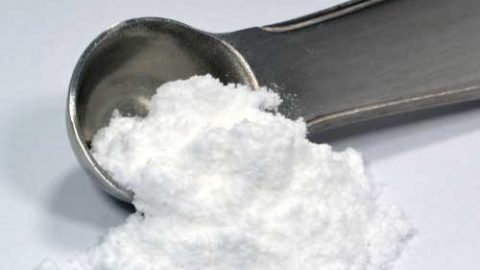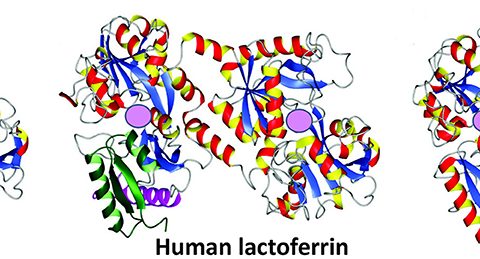Holy marketing spin Batman!!!!. This is the same study I wrote about in my article comparing WMS to white bread for Muscular Development and found HERE
First the sellers of waxy maize claim it’s faster absorbing then malto, dextrose and other high GI carb sources, and when this study (and others…) showed that not to be the case, they do a 180 and now claim its benefit is as a slow digesting low GI carb??!!
It’s called marketing folks. You claim one thing, and when all the studies show it’s BS, you simply change your claims!
Now lets see how many of the buying public fall for this…
I hate to say I told you so, BUT I TOLD YOU SO!
Read this with a critical eye, and you will easily see the spin at work:
FOR IMMEDIATE RELEASE
University Study Shows Waxy Maize Starch Study Could Serve as Slow, Sustained Energy Source Low Glycemic Carb Could Help Fuel Military Personnel, Endurance Athletes
Irvine, CA – July 30, 2009– Purdue University researchers may have found a new use for an old starch—waxy maize starch—to offer sustained energy delivery to military personnel and endurance athletes.
Waxy maize starch, called ‘waxy’ because of the appearance of the kernel under cross section, was brought from China to the US in the early 1900s. In the study, published in the current issue of Nutrition Research, waxy maize starch was compared to a mixture of maltodextrin and sugars, and to white bread. The study confirmed previous studies showing waxy maize starch to be slowly digested and absorbed, producing a much smaller increase in blood sugar and insulin.
“Waxy maize starch appears to provide slow, sustained delivery of energy to the body,” offered sports nutrition researcher Chad Kerksick, PhD of the University of Oklahoma Department of Health and Exercise Science. “These new findings confirm what we have seen in our study comparing waxy maize starch to maltodextrin.”
In the Purdue study twelve lean and fit young men and women received a 50 gram dose of carbohydrates supplied by white bread, waxy maize starch, or a maltodextrin and sucrose mixture (approximately 3:1 ratio), on three different days. Blood glucose and blood insulin responses to the carbohydrate sources were followed for four hours, along with measurements of calorie burning rate and subjective measurements of appetite and fullness.
The study performed an assessment of the glycemic index, a measure of the excursion of blood sugar relative to a “control” carbohydrate, white bread, and a fast digesting and absorbing carbohydrate source, maltodextrin plus sugar, at 2 and 4 hours after ingestion. At 2 hours, maltodextrin plus sugar achieved a glycemic index of 163, waxy maize starch had a value of 63, and white bread 71. The blood insulin response, influenced by how fast the carbohydrate was digested and absorbed, was 3.5 times higher, and substantially faster in the first hour with maltodextrin plus sugar, and 1.6 times higher with white bread, relative to waxy maize starch. None of the carbohydrate treatments differed in their influence on hunger, appetite, or calories burned.
“This study with waxy maize starch directly refutes what numerous sport nutrition product companies are claiming—that waxy maize starch is fast absorbing and raises insulin sharply,” described Susan Kleiner, PhD, RD, director of High Performance Nutrition, LLC in the Seattle area, and the author of the best selling book Power Eating, Third Edition. “It actually may be best suited for long endurance exercise or for persons who experience blood sugar fluctuations, as blood sugar did not drop below the starting point 4 hours after waxy maize starch but did with maltodextrin plus sugars,” added Dr. Kleiner.
“Although an exercise endurance test was not performed, we and other researchers have shown that at least over a 2 hour period, waxy maize starch does not enhance endurance performance over maltodextrin,” added Dr. Kerksick. “What would be interesting to explore is whether waxy maize starch would shine in ultra-endurance training or competition, in events lasting 4 hours or more. This may be why the military had an interest.”
This study was funded by the US Army, Natick Soldier Research Development & Engineering Center, Combat Feeding Program in Natick, MA.
Will Brink is the owner of the Brinkzone Blog. Will has over 30 years experience as a respected author, columnist and consultant, to the supplement, fitness, bodybuilding, and weight loss industry and has been extensively published. Will graduated from Harvard University with a concentration in the natural sciences, and is a consultant to major supplement, dairy, and pharmaceutical companies.
His often ground breaking articles can be found in publications such as Lets Live, Muscle Media 2000, MuscleMag International, The Life Extension Magazine, Muscle n Fitness, Inside Karate, Exercise For Men Only, Body International, Power, Oxygen, Penthouse, Women’s World and The Townsend Letter For Doctors.
He’s also been published in peer reviewed journals.
Will is the author of the popular e-books, both accompanied by private members forum access , Bodybuilding Revealed & Fat Loss Revealed.
You can also buy Will’s other books on Amazon, Apple iBook, and Barnes and Noble.





Did they use Wazy Maize or Vitargo in the study?
Just another in the long line of people trying to makle a buck. I’m glad I listen to your advice on these things. You called it from the start. Bravo. —— Again.
Pierre, as the blog mentions, wavy maze was used in the study. I wouldn’t have called it the “latest spin on waxy maize” had they used Vitargo in the study 🙂
I’m seeing Waxie Maize added to pre workout drinks to maximize “pumps” now that you have helped defunk the fast/slow theory, is there any benefit of Waxie Maize for this purpose? i’m not a fan of the stimulants added to pre-workout drinks. however, something like Nutr** Mass *plosion seems to provide an interesting pump minus the stimulants. they add the waxie to their formula…any thought?
Hey my friend Will. I just say thx a lot for this great info.
Sugar continues being a great option, to increase insuline, the anabolic grow hormone.
Thx again
Hi Will, interesting post as usual. I had a discussion with bodybuilders friends about your topic and they noticed that waxy maize is a generic term. Waxy maize powders can show a wide range of molecular weight. In the present post of yours, we have no idea of the molecular weight of waxy maize used in the study. As you know, higher molecular weight means faster absorption (some waxy maize can rise up to 700 000 g/mol).
Laurent, have you read my full article on the topic? It’s linked in the text above. Molecular weight is not the only factor in absorption, not by a long shot.
From the article: “It’s easy to see why people are often confused regarding WMS vs. Vitargo, and why sellers of WMS have taken advantage of that fact. Vitargo can be derived from WMS, so they are essentially the same thing right? Wrong. Vitargo can be derived from WMS, potatoes, rice, wheat, and other sources, so even if WMS is used as the starting source, it’s a very different starch as the finished product. If one reads the patent on Vitargo there is a very interesting statement made which is on testing, “it will be found there have occurred novel types of bonds which do not occur traditionally in native starch.”
“What that means is, it’s a starch not normally found in nature and is structurally and functionally different than the starch source it was derived from. A true “designer starch” if you will, which appears to be optimally designed to favor the rapid formation of glycogen.”
As far as types WMS, one can usually see what was used in the materials and methods section of the paper. Yes, there are different WMS, but so far, every WMS vs Virtargo study, much less dextrose and malto, finds WMS inferior in all respects in terms of what you want from a PWO carb source…
I totally agree with everything you have explained. Actually, I browsed throughout your several other content articles and I think you are definitely correct. Best wishes with this site.